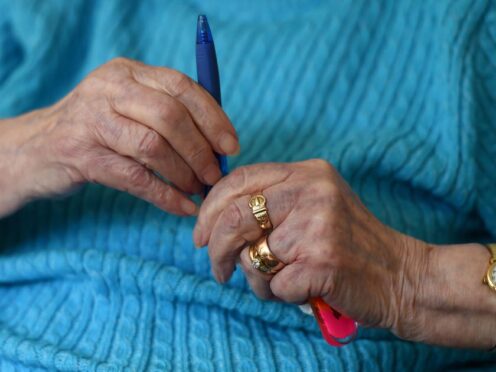
Pensioners have gained more than working-age households from tax and benefit decisions since 2010, according to a think tank.
The average pensioner is £900 better off as a result of benefit policy changes since 2010 while the average non-pensioner household is £1,400 worse off amid a less generous social security system for working-age families, the Resolution Foundation said.
The triple lock, which is used to increase state pensions annually, is a driver behind the improvements for pensioners.
It has led to the state pension growing by 60% between 2010-11 and 2023-24, faster than the 46% growth in average earnings, the report said.
Demographic pressures and policies have shifted the balance of state spending towards pensioners since 2010, researchers found.
Despite state pension age rises, the number of people claiming the state pension went up by around 570,000, from 12.4 million to 13 million, between 2009-10 and 2024-25, and is expected to rise to 13.2 million by 2028-29.
The demographic shift has meant that a greater share of public spending, including the state pension, other pensioner benefits and old-age health spending, is focused on this older cohort, the foundation said.
Spending on pensioners has grown from 9.3% of GDP in 2009-10 to 9.8% in 2024-25, according to the research, funded by the Nuffield Foundation.
But while benefit policies have generally made pensioners better off, tax changes, such as the recent cuts to employee national insurance, have helped to rebalance the “winners” and “losers”, the report said.
Looking at all permanent tax and benefit changes since 2010, the research found that pensioner households are £1,000 a year better off on average in 2024-25, while working-age households are £760 a year better off.
However, some groups have been left worse off, according to the foundation.
For example, households with children aged 14 and under are typically £780 a year worse off in 2024-25, as any tax gains have been more than offset by cuts to many child-related benefits, the report said.
The foundation argued that the main task facing Britain is to restart the generational progress on living standards.
People born in the late 1980s earned on average 8% less at age 30 than people born 10 years earlier did at the same age, it said.
Stronger economic growth will hold the key to restarting this progress, rather than specific policies targeted at different age cohorts, according to the foundation, which is focused on improving the living standards for those on low to middle incomes.
Sophie Hale, principal economist at the Resolution Foundation, said: “The combination of Britain’s big baby boomer generation retiring, and policies that have benefited pensioners the most, has meant that the profile of Britain’s public spending has greyed.
“Overall pensioners have gained more than working-age households from tax and benefit decisions since 2010, while families with children have seen support fall by £780 a year.”
She said that while both the Conservatives and Labour have a wide range of policies targeted at specific age cohorts “ultimately these policies won’t decide whether the new generation of young adults enjoys higher living standards than their predecessors”.
“That will only come from stronger economic growth,” she added.

Enjoy the convenience of having The Sunday Post delivered as a digital ePaper straight to your smartphone, tablet or computer.
Subscribe for only £5.49 a month and enjoy all the benefits of the printed paper as a digital replica.
Subscribe